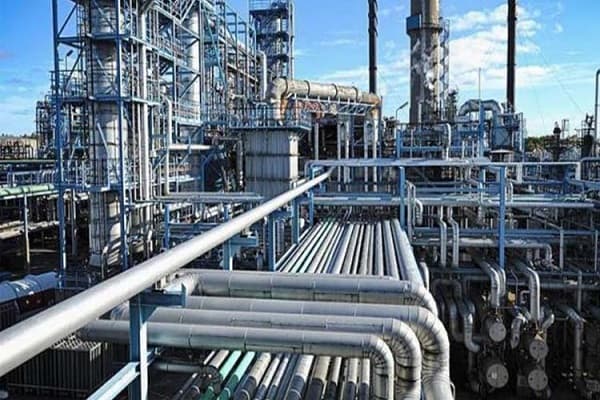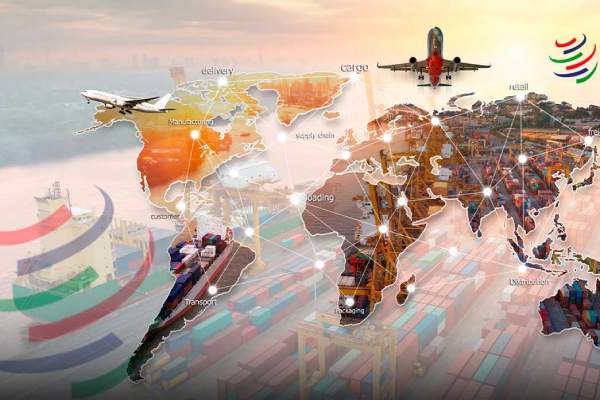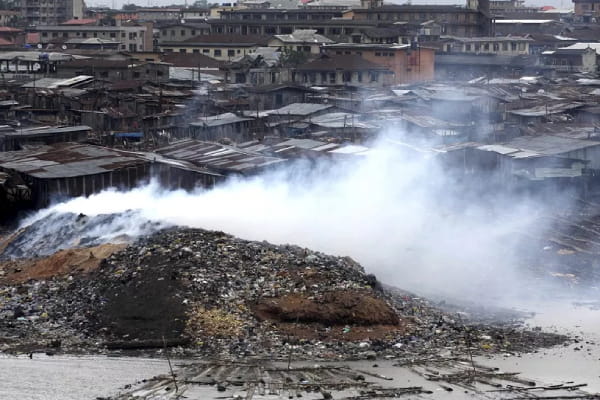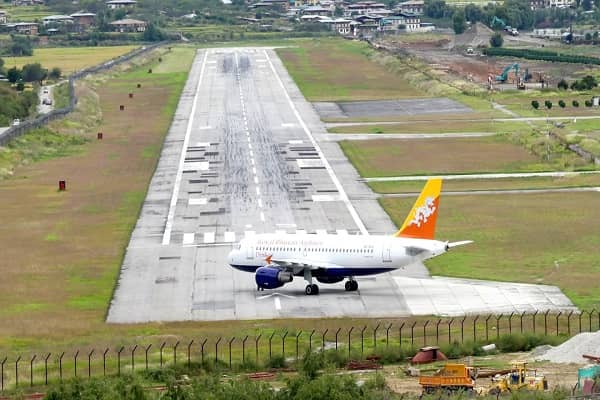Top 10 Largest Refineries In The World 2024
The oil refining industry has traditionally counted among its ranks the companies with the largest market capitalization in the world for many years. But although things are changing, the crisis in crude oil prices has hit the profitability of the sector and investment has hit a significant drop in the face of a future plagued by dark clouds, even so, the refining sector continues to be one of the leaders in the world economy only overshadowed by the technology sector.
There are currently around 680 refineries in the world, with a global refining capacity of more than 95 million barrels per day. On a global scale, the United States is the country with the greatest refining capacity, and is also the country with the largest number of petrochemical complexes, specifically, 21.9% of refineries are located on US soil.

However, when we talk about the size and refining capacity, Asia is the continent that concentrates the largest number of refineries that appear in the Top ten of the largest oil refineries in the world. The largest, with a refining capacity of 1.2 million barrel days, is India’s Jamnagar refinery, owned by Reliance Industries. And in the ranking, up to seven of the top 10 are located in Asia. The concentration of just over two thirds of the world’s population in the Asian continent is undoubtedly the cause of this high level of concentration of refining activity. The other three are in the American continent (two in the US and one in Venezuela).
The size of all of them exceeds the refining capacity of half a million barrels per day, but the average capacity of the 680 refineries in the world is 133,000 barrels per day. The Spanish refinery with the largest refining capacity is Cepsa‘s San Roque de Gibraltar, which processes a fifth of that of Jamnagar (220,000 barrels/day).
The Top ten of the world’s large refineries is led by India’s Jamnagar. Curiously, South Korea -with three- is the country with the most representatives in this classification, followed by the United States, with two refineries, and India, Venezuela, the United Arab Emirates, Singapore and Saudi Arabia, with one representative. These are the ten largest refineries in the world:
1. Jamnagar Refinery – 1.24 million barrels a day
Jamnagar is the largest industrial complex in the world. It is a refinery that is located in Jamnagar, Gujarat, in western India. It is owned by Reliance Industries Limited (RIL) and has the capacity to process 1.24 million barrels per day. His numbers are huge. Its extension is 30 million square meters (one third of cities like London or Bombay).
If all the pipes of the complex are put together, India could be linked from north to south. Its 2,500 employees live in this small town. It was built in record time. It only took three years to build this complex. More than 75,000 workers were there day and night to build Jamnagar.
A comparison, the largest refinery in Spain, Cepsa’s San Roque refinery in Gibraltar, processes a fifth of that of Jamnagar (220,000 barrels/day), and that the world average is 133,000 barrels per day in refineries around the world. world.
2. Paraguaná Refining Center – 940,000 barrels per day
The Paraguaná Refining Center (CRP) is an oil refining complex located in Venezuela and is currently the second with the largest capacity in the world, just after the Jamnagar refinery (India). The CRP arose from the operational and administrative merger of the Amuay, Bajo Grande and Cardón refineries, whose activities were concentrated in 1997. Currently, the CRP has the capacity to refine 940,000 barrels per day, out of the 2,667,000 it produces daily.
The complex is located in an area shared by the western portion of the Paraguaná peninsula in Falcón state and the western shore of Lake Maracaibo in Zulia state. This complex concentrates 65% of the Venezuelan refining capacity and belongs to the state company Petróleos de Venezuela (PDVSA).
In 1945, the national government authorized the transnational Creole Petroleum Corporation and Shell de Venezuela to build two oil refineries near Punto Fijo, which was decisive for the rise of this city. The Shell Cardón refinery began operations in 1949 with a capacity of 30,000 barrels per day, today it reaches 305,000; the Amuay de la Creole refinery began in 1950 with the processing of 60,000 barrels per day up to the current 635,000 and finally the Bajo Grande refinery, built in 1956 by Richmond with a capacity of 15,000 barrels per day. The refinery was partially closed in 1987 and currently processes 16,000 barrels per day.
3. Ulsan Refinery – 840,000 barrels a day
The Ulsan refinery is the third largest in the world, with a refining capacity of 840,000 barrels per day (bpd). The industrial complex is located in the Ulsan metropolitan area in South Korea and is owned by SK Energy. The refinery produces LPG, gasoline, diesel, jet fuel, and asphalt.
Operations at the Ulsan refinery began in 1964. The first crude oil refining unit with a capacity of 35,000 bpd was completed by Fluor in 16 months. Refining capacity was expanded to 810,000 barrels in 1996. A heavy oil desulphurization plant was commissioned at the industrial complex a year later and decomposition was commissioned at the complex in 1997 and a second cracker residue (CRCC) Fluid Catalytic Plant was commissioned in 2008.
The refinery has five crude distillation units and one paraxylene unit with a capacity of 758,000 tons per year. It also has two naphtha cracking units and a heavy crude upgrading plant with a capacity of 114,000 barrels per day. In addition, the refinery has 34 large-scale crude oil storage tanks.
4. Ruwais Refinery – 817.00 barrels per day
Located about 240 kilometers west of the city of Abu Dhabi, the Ruwais Industrial Complex began development in the 1970s, when plans were laid to transform a piece of desert into a self-contained industrial city, geared towards the oil and gas industry. Abu Dhabi gas.
The Ruwais complex is owned by the Abu Dhabi Oil Refining Company (Takreer) and was officially opened in 1982 by the late Sheikh Zayed bin Sultan Al Nahyan. Shortly after the original facilities with a refining capacity of 120,000 barrels per day (bpd) came online, a cracking complex with a capacity of 27,000 barrels per day (bpd) was built in 1985.
In 1991, the company commissioned a sulfur granulation plant to handle all the liquid sulfur recovered at the Gasco and ADGAS natural gas liquefaction facilities. Its operations were also integrated into the Ruwais refinery in 1992. After its expansion in early 2001, the granulation capacity, at 7,650 tons per day, has become one of the largest in the world.
Between 200 and 2002, two processing trains of 140,000 barrels per day of condensate were put into operation. They have been joined by other production units and the total processing capacity today is 817,000 bpd.
5. Yeosu Refinery – 775,000 barrels a day
The Yeosu refinery, the fourth largest in the world, is located in the city of Yeosu, in the southern province of Jeolla, in South Korea. The refinery’s processing capacity is 775,000 barrels per day (bpd). The refinery is operated by GS Caltex, a joint venture between GS Holdings and Chevron.
The refinery began operations in 1969. A residual fluidized catalytic cracking plant with a capacity of 94,000 bpd was installed in 1995. A second heavy crude oil upgrade (HOU) plant was built later, in August 2007.
The refinery has a desulfurization facility with a capacity of 272,000 bpd. It also includes a hydrocracking oil plant, HOU facilities to convert waste into cheap petroleum products such as kerosene and diesel.
6. Onsan Refinery – 669,000 barrels a day
The Onsan Refinery, in Ulsan, South Korea, is the fifth largest oil refinery in the world, with a processing capacity of 669,000 bpd. Owned and operated by S-Oil Corporation, the refinery produces, in addition to fuels, base oils and petrochemicals.
The refinery’s processing capacity was expanded from 580,000 bpd to 669,000 bpd in 2011, after the construction of a complex in which 1.28 billion dollars were invested. The refinery includes a fractionation condensing unit (CFU) for additional naphtha production.
7. Port Arthur Refinery – 600,000 barrels a day
The Port Arthur refinery is the seventh largest petrochemical complex in the world, with a total processing capacity of 600,000 bpd. The refinery is located in the Gulf of Mexico, in Port Arthur, Texas, and was operated by Motiva Enterprises, a 50/50 joint venture between Shell and Aramco, until last May, following an agreement between the two companies, the Saudi Aramco took control of 100% of the refinery.
The refinery began operations in 1903 and played an important role in the production of high-octane aviation fuel during World War II. The refinery became part of the Star Enterprise, a joint venture between Texaco and Saudi Aramco in 1989.
The refinery produces gasoline, distillates, aviation fuel, base oils for lubricants, and chemicals and solvents. It became the largest refinery in the US by expanding its daily processing capacity to 600,000 bpd in May 2012.
The refinery includes a catalytic reformer in the new three-unit naphtha processing complex, which converts to 85,000 bpd high octane for blending.
8. Singapore Refinery – 592,000 barrels a day
ExxonMobil‘s refinery in Singapore is the eighth-largest refinery in the world. The refinery has a processing capacity of approximately 592,000 bpd. It has two operating plants located one on the Jurong mainland, and the other on Pulau Ayer Chawan (PAC) on Jurong Island in Singapore. The Jurong mainland refinery has a processing capacity of 302,000 bpd, while the PAC refinery has a capacity of 290,000 bpd.
The Jurong refinery came online in 1966 and the Chawan Pulau Ayer refinery began operations in 1970. The latest expansion of the refinery was completed in December 2012 with the addition of new capacity for processing 2.6 million tons. of finished product per year.
The refinery includes an ethylene cracking complex, a chemical plant and an aromatics plant.
9. Baytown Refinery – 584,000 barrels a day
Baytown refinery is the second largest oil and petrochemical complex in the US and the ninth largest in the world. It has a processing capacity of 584,000 barrels per day. It is located in Baytown, Texas, United States, and is owned and operated by ExxonMobil.
The refinery was established in 1919 and began operations in 1920. The petrochemical complex spans 3,400 acres along the Houston Ship Channel. The complex’s chemical plant, for its part, began its operations in 1940.
The refinery produces jet fuel, diesel, refinery gas, propane, chemical feedstocks, oils, gasoline, and coke. The main complex occupies five square miles and integrates two chemical plants, the regional engineering office and a global technology center.
Read Also: Top 20 Coffee Producing Countries In The World
10. Ras Tanura Refinery – 550,000 barrels a day
Ras Tanura closes the ranking of the Top 10 largest refineries in the world, with a crude refining capacity of 550,000 bpd. The refinery is located on the Persian Gulf coast near the industrial port city of Jubail in Saudi Arabia and is owned by Saudi Aramco.
The Ras Tanura refinery is the oldest in the Persian Gulf and began operations in September 1945 with an initial production capacity of more than 60,000 bpd. Currently the complex’s daily processing capacity is 550,000 barrels.
The refinery has begun this year the modernization work that had been repeatedly postponed in recent years. Now, however, Saudi Aramco has decided to promote the project, which includes the rehabilitation of existing facilities, as well as the construction of others, with the aim of producing cleaner fuels. The works, which will take four years, are being carried out by the Spanish engineering company Técnicas Reunidas, and 1,500 million will be invested in them.







